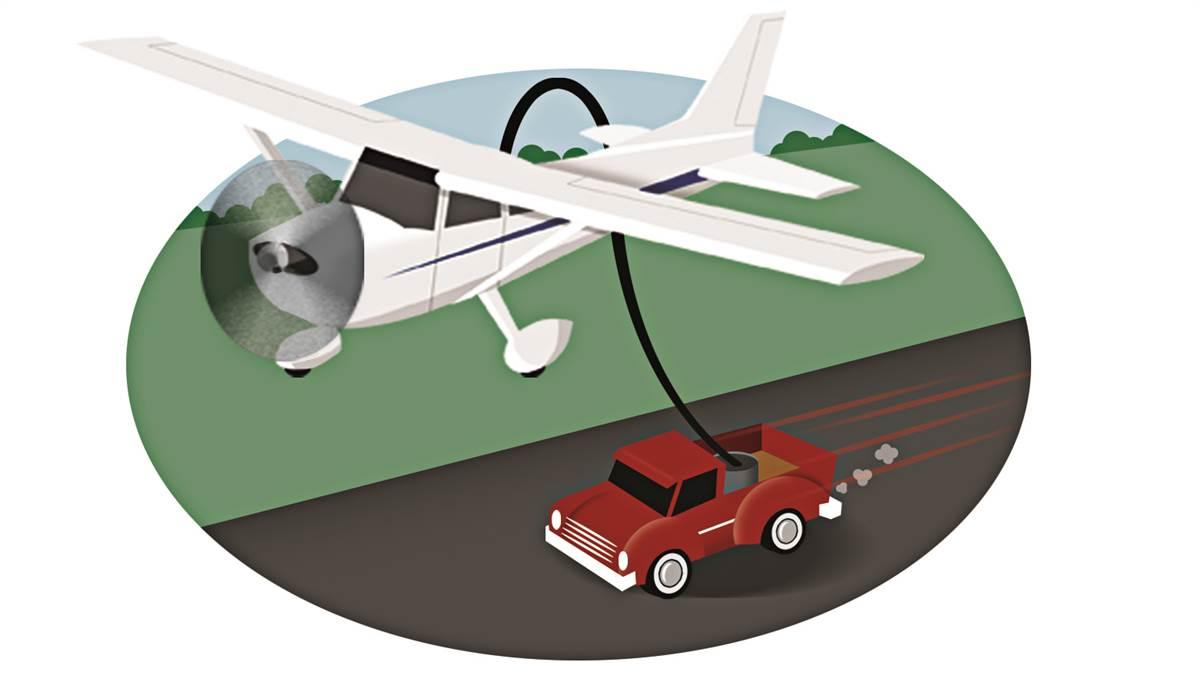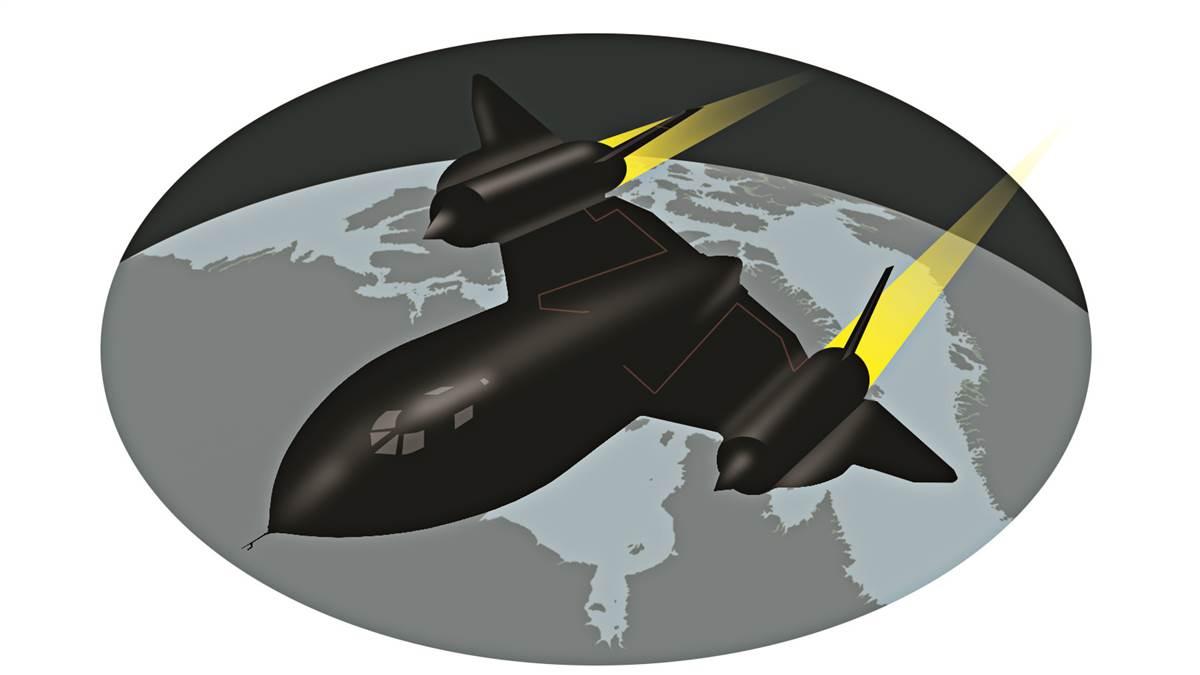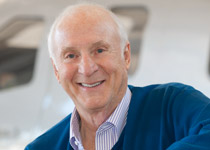Going for gold
Flying into the record books

Illustrations by John Ueland
A similar but more pragmatic spirit motivates some pilots to fly higher, faster, and farther than their predecessors, resulting in spectacular aeronautical achievements. Consider, for example, Timothy Gardner and James Payne’s 2018 flight over Argentina to 74,334 feet msl in a glider, four statute miles above the ceiling of a Boeing 787. Also incredible is Mario Pezzi’s climb to 54,046 feet msl in an Italian, normally aspirated, piston-powered Caproni biplane—an astonishing feat that has stood unbeaten since 1938.
During the early years of powered flight, performance claims were made all over the world. Many were demonstrably accurate, while others were blatant exaggerations. It became evident that some orderly method had to be developed to substantiate and keep track of performance gains in aviation.
In 1905, representatives from eight countries—including the United States—formed a world federation to draft rules governing world record attempts. This organization, the Fédération Aéronautique Internationale (FAI), is headquartered in Lausanne, Switzerland, and has more than 100 member nations.
 The FAI is charged with verifying and approving all successful world record attempts and rewarding pilots with its coveted Diplôme de Record. The task of timing, measuring, and supervising record attempts, however, is delegated to the national aero club of the country in which a record attempt is being made. The FAI affiliate in the United States is the National Aeronautic Association (NAA) in Washington, D.C. In Russia, pilots compete under the jurisdiction of the Federatsia Aviatsionnogo Sporta Rossi, while Japanese pilots work with Nippon Koku Kyokai. The international rules for setting and breaking world records, however, are the same everywhere, thus allowing pilots of all nations to compete on a level playing field.
The FAI is charged with verifying and approving all successful world record attempts and rewarding pilots with its coveted Diplôme de Record. The task of timing, measuring, and supervising record attempts, however, is delegated to the national aero club of the country in which a record attempt is being made. The FAI affiliate in the United States is the National Aeronautic Association (NAA) in Washington, D.C. In Russia, pilots compete under the jurisdiction of the Federatsia Aviatsionnogo Sporta Rossi, while Japanese pilots work with Nippon Koku Kyokai. The international rules for setting and breaking world records, however, are the same everywhere, thus allowing pilots of all nations to compete on a level playing field.
A physical book of world aviation records is no longer published, but existing world records are displayed on the NAA’s website. This digital compendium lists some truly astonishing accomplishments, a place where any pilot would be proud to see his name included. Female pilots might become agitated, however, to discover that some of their world records in the balloon and glider classes of aircraft are segregated from their male counterparts, the chauvinistic implication being that women pilots are incapable of successfully competing against men.
World records are grouped according to various classes and subclasses of aircraft so that glider pilots do not compete against astronauts, and model airplanes do not compete against jetliners. Do not snicker at the notion of world records for model aircraft. This is a very serious field of endeavor as evidenced by some truly remarkable performances. Russian modelers Valery Myakinin and Alexander Vasiliuk kept their radio-controlled glider aloft in 2009 for 39 hours, 3 minutes. American Maynard Hill inspired his model airplane in 1970 to climb for an altitude gain of 26,919 feet. Another American, Ronald Clem, flew his open-class, piston-powered model airplane in 1998 for a straight-line distance of 517.2 statute miles. (World aviation speed and distance records are officially listed using kilometers and statute miles, which is why these units are used here instead of nautical miles and knots.)
At one time or another, the record book included the names of aviation’s most famous pioneers, but most of their records have long since been eclipsed. Charles A. Lindbergh’s 90-mph record flight from New York to Paris, for example, is currently held by Robert Moriarty, who flew his Beechcraft Bonanza C35 along the same route in 1984 at an average speed of 200.61 mph. Gone, too, are the around-the-world speed records held by Wiley Post and Howard Hughes. Modern airplanes enable pilots to circumnavigate the globe at average speeds well in excess of 83 mph (Post) or 161 mph (Hughes). A pilot’s speed around the world is determined by dividing total distance flown by the total time required to make the flight. This includes time spent on the ground and explains why British pilot Colin Bodill’s globe-girdling record flight in a Mainair Blade 912 is listed at only 10.27 mph. But completing a flight around the world in an aircraft weighing less than 1,102 pounds (500 kg) would be a remarkable feat at any speed.

Interestingly, neither the Post nor the Hughes efforts would qualify today as flights around the world. Previously, any route around the world would suffice. Eventually, though, someone suggested that the world could be circumnavigated in less than a minute simply by making a 360-degree pylon turn around the North Pole. So it was decreed that an official attempt must fly a route at least equal in length to the circumference of the Tropic of Cancer, considered to be 22,848 statute miles. Because Hughes and Post flew northerly routes—both overflew Russia—the distances flown were only 14,672 and 15,569 statute miles, respectively.
International rules also have been modified to exclude endurance records. Such flights were once condoned, but this was during an era when skill and cunning was needed just to keep an engine running for more than an hour or two. As engine reliability increased, endurance flights simply gauged the ability of a pilot to stay awake and endure prolonged periods of fatigue. Eventually, some aviators passed out during their record attempts with fatal results. The FAI decreed that such flights no longer served a useful purpose and eliminated them from competition. This is why the 65-day, nonstop flight in 1958 and 1959 of Robert Timm and John Cook in a Cessna 172 never received the FAI’s official blessing. (Midair refueling was accomplished by handing a fuel hose to the pilots as they flew low and slow over a pickup truck.)
 Duration attempts, however, are still acceptable when flying balloons. The longest flight to date in a hot-air balloon, for example, is 55 hours, 10 minutes and was flown by Russian pilots Ivan Menyaylo and Fedor Konyukhov in 2017.
Duration attempts, however, are still acceptable when flying balloons. The longest flight to date in a hot-air balloon, for example, is 55 hours, 10 minutes and was flown by Russian pilots Ivan Menyaylo and Fedor Konyukhov in 2017.
Pilots face a wide variety of challenges in pursuit of a world record. There are, for example, flights made for speed along 3-km and 15-km straight-line courses. The shorter 3-km flight must be conducted at no more than 100 meters agl, and diving into the starting gate is verboten. To negate the effect of wind, flights must be made in both directions. Speeds are then averaged to obtain the final result. Closed-circuit courses (100, 500, 1,000, and 2,000 km, for example) may be flown for speed at any altitude as long as the aircraft is no lower at the end of the circuit than it was at the beginning.
The rules make no distinction between turbocharged and normally aspirated engines or between single- and multiengine aircraft. Aircraft are classed by type of powerplant (piston, turboprop, fanjet, rocket, and so forth), and—depending on the specific record being pursued—the weight of the aircraft at the time of the attempt. This is why some aircraft must be weighed in takeoff configuration under NAA supervision immediately before takeoff. Also, a given airplane may compete in two different weight categories, depending on its actual takeoff weight. During its flight around the world, the Rutan Voyager was heavily loaded and qualified in the 6,614 to 13,228-pound weight class. But when it had previously competed for maximum distance in a closed course, it weighed less and competed in the 3,858 to 6,614-pound class.
World records of particular fascination to general aviation pilots include Max Conrad’s nonstop, 56-hour, 6,966.71-statute-mile solo flight in 1959 from Casablanca, Morocco, to El Paso, Texas, in a 180-horsepower Piper Comanche (2,205 to 3,858-pound weight class), a distance record that might never be beaten. Another is Fran Bera’s 1966 climb to 40,154 feet msl in a Piper Aztec (3,858 to 6,614-pound class).
The U.S. Air Force holds the ultimate speed record for jet-powered landplanes of 2,189.95 mph in its Lockheed SR–71, although some Blackbird pilots claim that the airplane could have flown faster. Then there is the time-to-climb record held by the Sukhoi P–42. In 1987 this stripped version of the Soviet SU–27 Flanker streaked from a standing start on a runway to an altitude of 12,000 meters (39,360 feet) in only 55.0 seconds, an average climb rate—including time lost during the takeoff roll—of 42,938 fpm.
You might think that it would be almost impossible for the average general aviation pilot to set or break a world record, but it can be done. This is because the FAI also certifies speed records for flights between cities. Remember the Spirit of St. Louis? If you don’t think that your Aeronca Champ or Cirrus SR22 is capable of capturing a major world record, then use it to establish or break a record between San Diego and San Francisco or between Amarillo and Camarillo or between any two cities of your choice. The minimum distance between selected cities must be 400 km (249 statute miles). A pilot can seek to break an existing record or establish a record between two cities for which a record has yet to be set—and there are many of these. A popular city-to-city record is from Kitty Hawk, North Carolina, to some other place, or vice versa.
You might ask what motivates people to spend the time, money, and effort required to break or establish a world aviation record.
The military uses world records to convincingly demonstrate an aspect of performance supremacy and to boost national prestige.
Airframe manufacturers similarly use world records to gain recognition for the superiority of their aircraft. When Ted R. Smith designed the Aerostar during the 1960s, he was convinced that it would be the world’s fastest, piston-powered lightplane. He decided to prove this by challenging two major world speed records in the Aerostar’s 3,858 to 6,614-pound weight class, records then held by a Soviet Yak 11 military trainer. My close friend, Hal Fishman, news anchor for KTLA-TV in Los Angeles, and I were selected to assault those world records using a stock Aerostar 601A. Flying N90337 at 25,000 feet around 500- and 1,000-km closed circuits in 1975, we averaged 305 mph and returned those records to the United States.
Later that year, however, John P. Harris flew a 435-horsepower, prototype Bellanca Skyrocket II and beat our new records. Oh, well. Records, they say, are made to be broken.
It is not as easy to explain why individuals are motivated to break or set world aviation records. Pilots might be driven to do what no one else before them has done because of fame, pride, the thrill of an adventure, or perhaps to attract attention to a charitable cause.
Unlike Guinness world records that can be established for almost any feat you might imagine, pilots may only compete for world aviation records in certain specified categories. The NAA, however, approves and awards U.S. national records for certain unique feats suggested and accomplished by individual pilots. For example, national records have been set for “Fastest Time to Visit All Hard Surface Public Airports in Michigan,” “Longest Distance Flown in a Closed Circuit Below Sea Level,” “Fastest Time to Fly Around the Border of the 48 States,” and so forth.
The first step in attempting to break or set a world or national aviation record requires joining the NAA and obtaining an FAI Sporting License; the total cost for both is $50. You can then obtain the rules and regulations applicable to the record that interests you. (It’s worth the 50 bucks just to prove to your friends that you are a certified international sport.)
As one who has held several piston and turbine records, I have learned much about what it takes to extract maximum performance from an aircraft. But to a greater extent, I have learned to appreciate the talent and skill of those who design the aircraft we fly. Pilots operate the controls and make the machines go, but in so many cases the accolades really belong to the designers whose brilliant creations enable us to extract the performance needed to set and break records.
Barry Schiff has been writing for AOPA Pilot since 1963.
Visit the author’s website www.barryschiff.com


